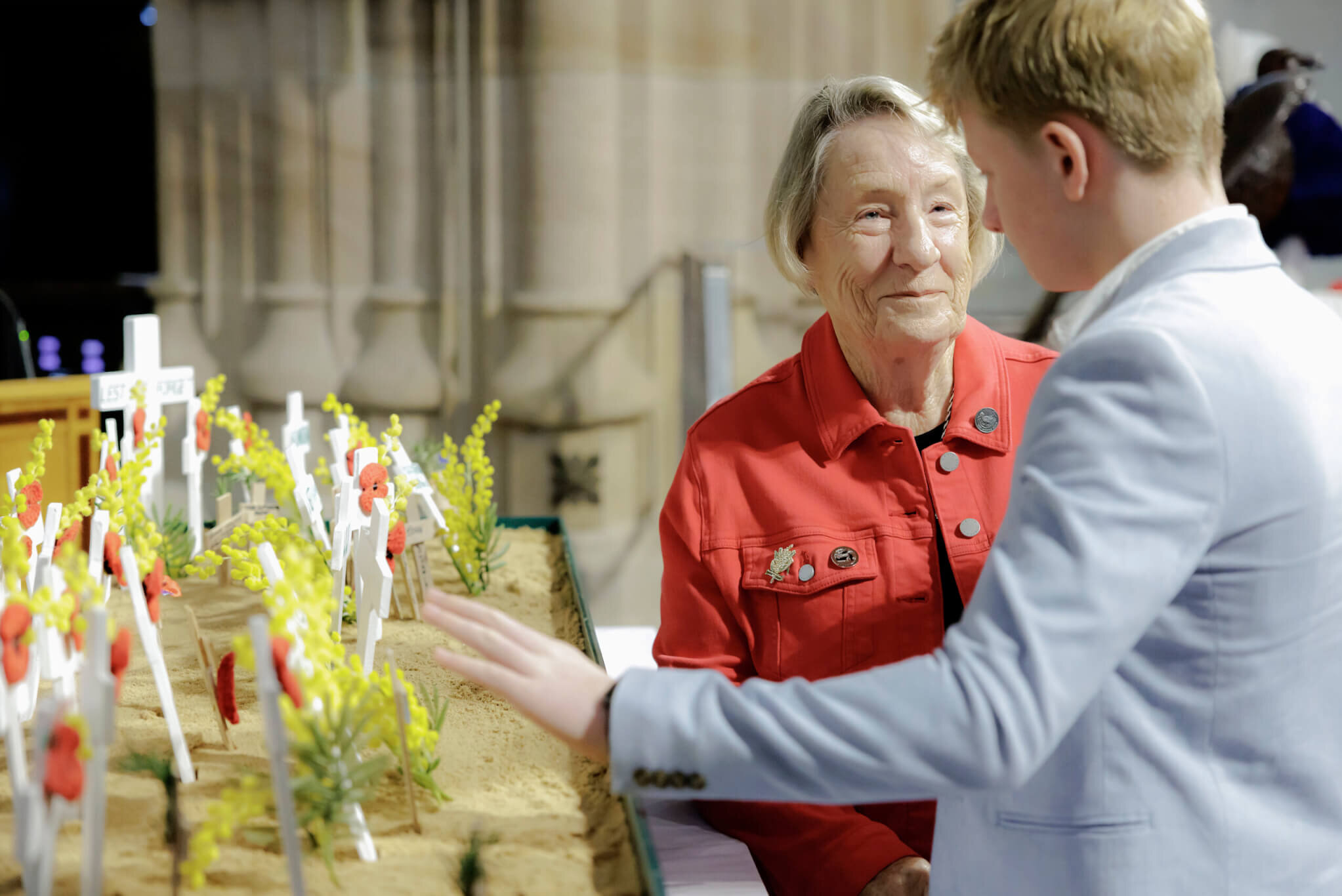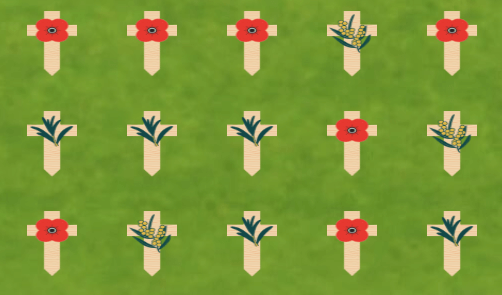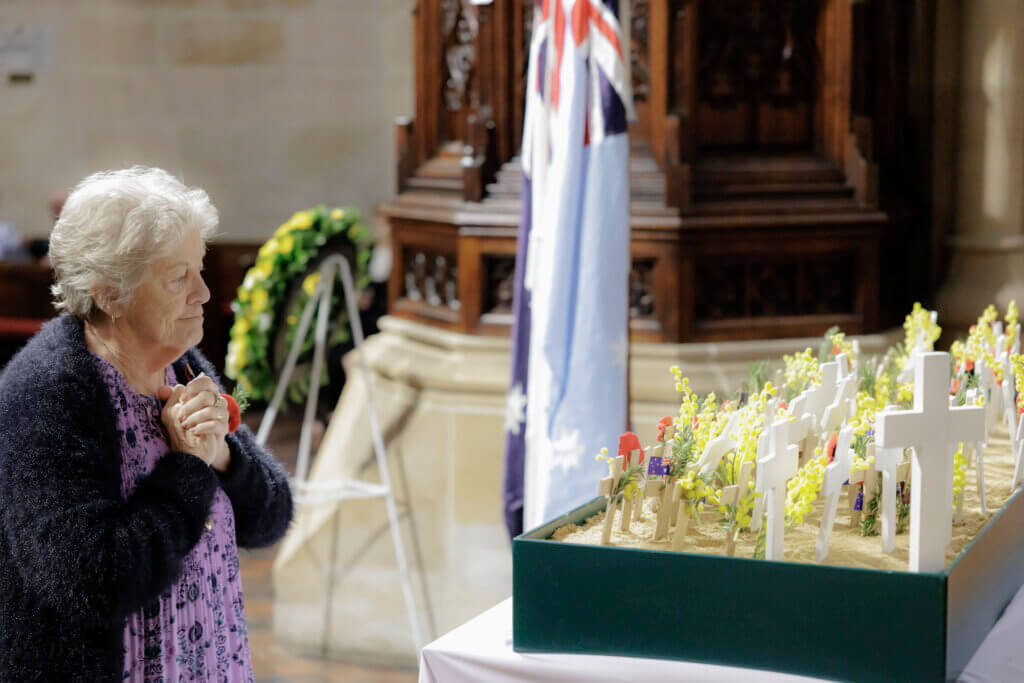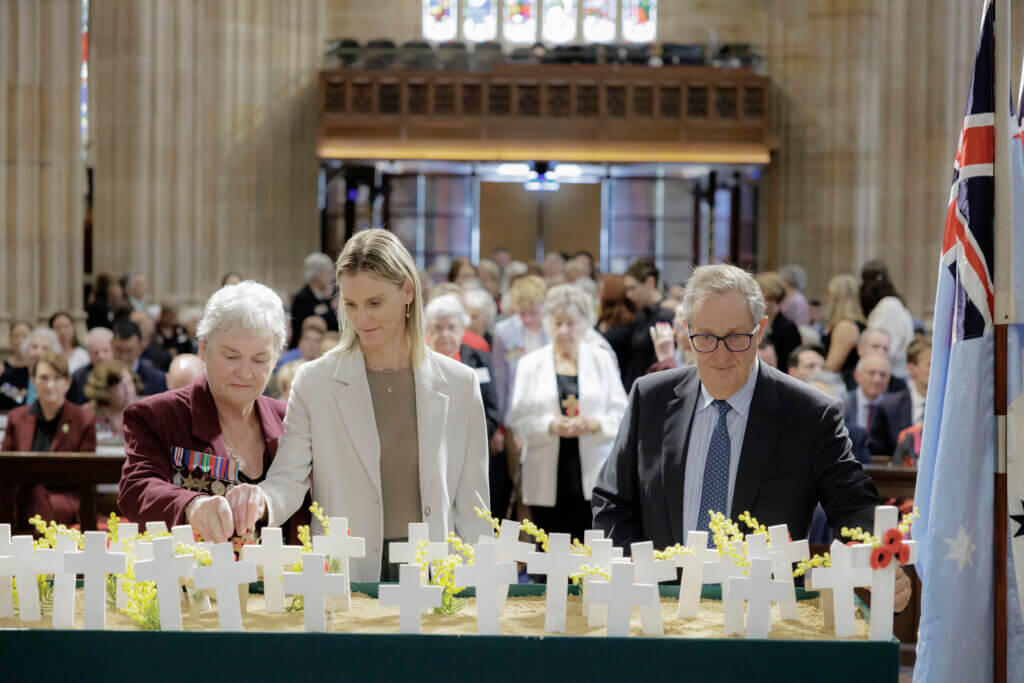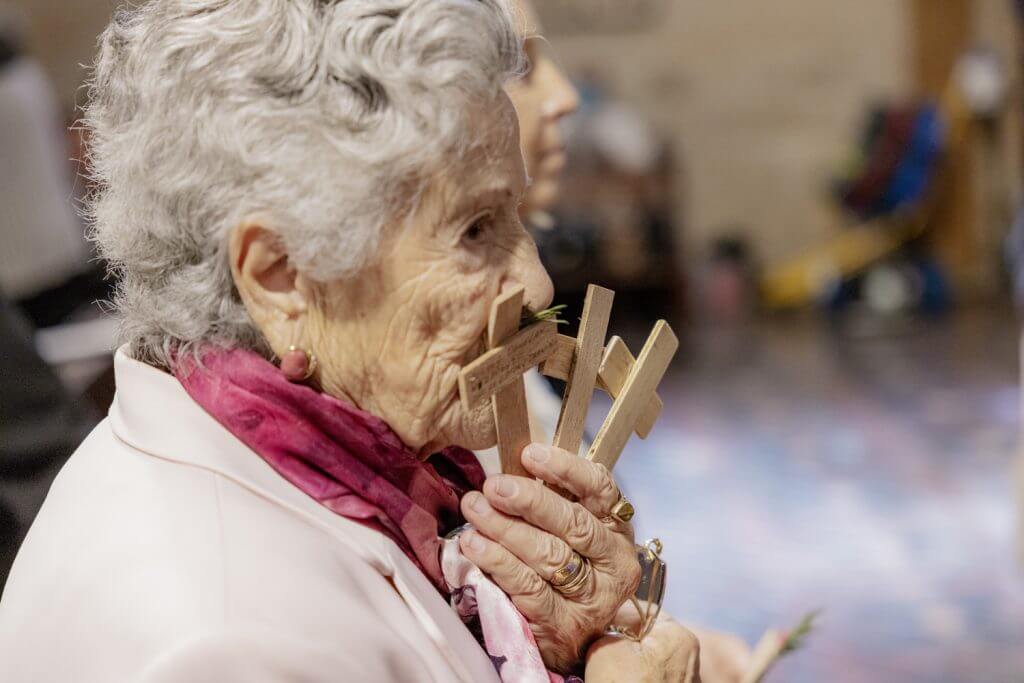ANZAC Field of Remembrance
Honouring service, sacrifice, and the families who carry their legacy
The ANZAC Field of Remembrance is a deeply moving commemoration held for those who know what service truly costs. Started in Sydney in 1952 by a war widow, this tradition continues today as a place where war widows, defence and veteran families gather to remember lives lived in service and lost in sacrifice.
Held annually at St Andrew’s Cathedral in Sydney in the lead-up to ANZAC Day, this ceremony is more than formal remembrance: it gives families the chance to speak a name, lay a cross, and share stories. It acknowledges the ongoing impact of Defence service on those left behind.
Each wooden cross carries a name and personal message, marking a life, a sacrifice, and the people left behind. This service recognises not only those who served, but the families who continue to bear the burden of that service, the people who continue to carry their story forward.
“We gather here not only to remember, but to continue.
To continue honouring, to continue telling their stories, and to continue supporting each other.”
— Queen Dunbar, State President, Families of Veterans Guild
How you can get involved
Commemorate from anywhere
We know not everyone can attend in person, so we ensure everyone has the chance to be part of this tradition.
Livestream the service: The ANZAC Field of Remembrance is broadcast live, so war widows and veteran families around the country can join the ceremony from wherever they are. Recording of our last service is available here.
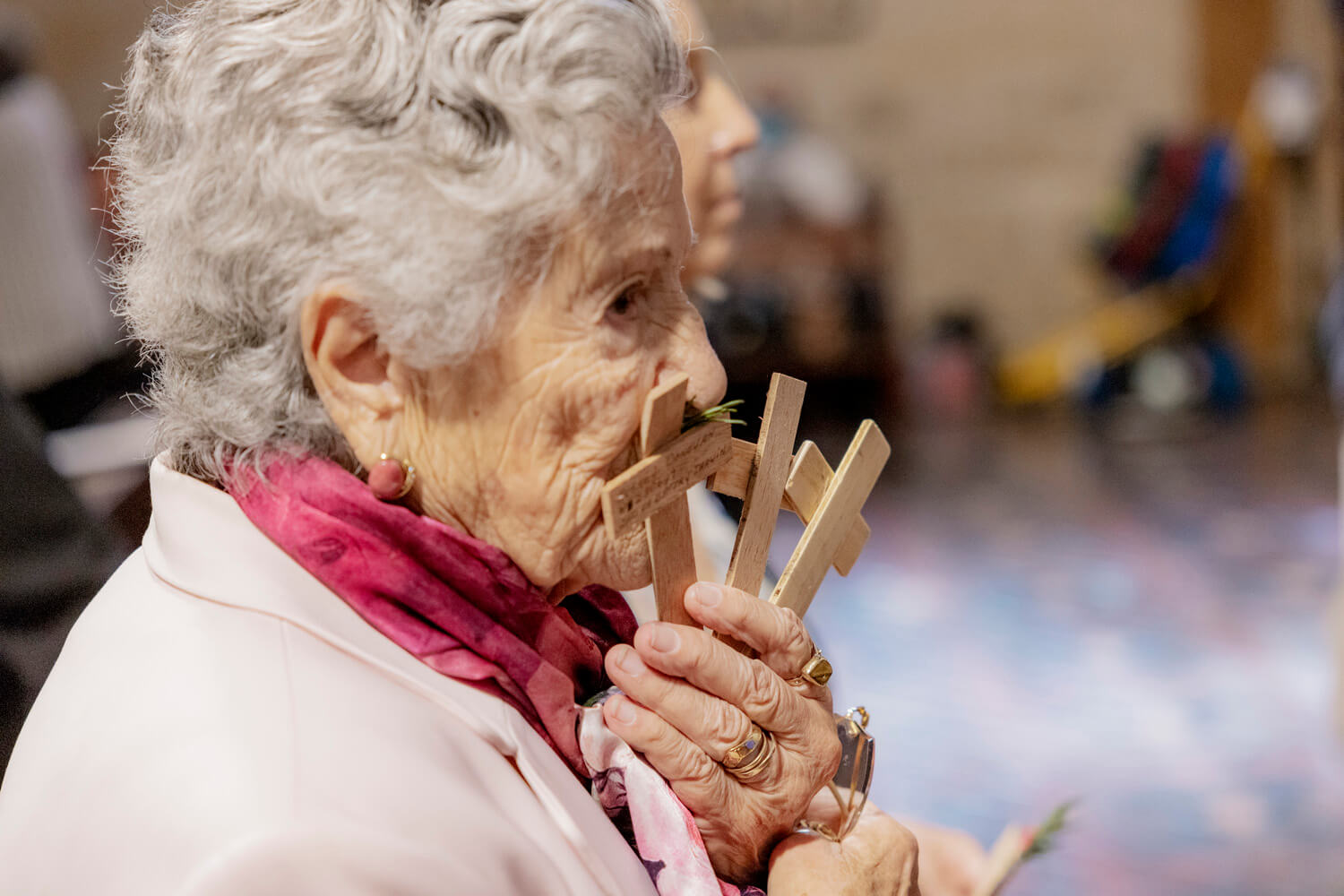
Lay a cross from afar
Families can request a memorial cross to be laid on their behalf. Each cross bears a loved one’s name and a message, placed with care in the Field by our team.
The opportunity to request a tribute opens around the month of the ANZAC Field of Remembrance in April.
Leave a virtual tribute
Our Virtual Field of Remembrance is always open. You can place a free tribute online — add a name, a personal message, and select a sprig of wattle, rosemary, or poppy to honour your loved one.
Every cross, every name, every message is part of a shared act of remembrance for those who served, and for the families who continue to carry that legacy.

